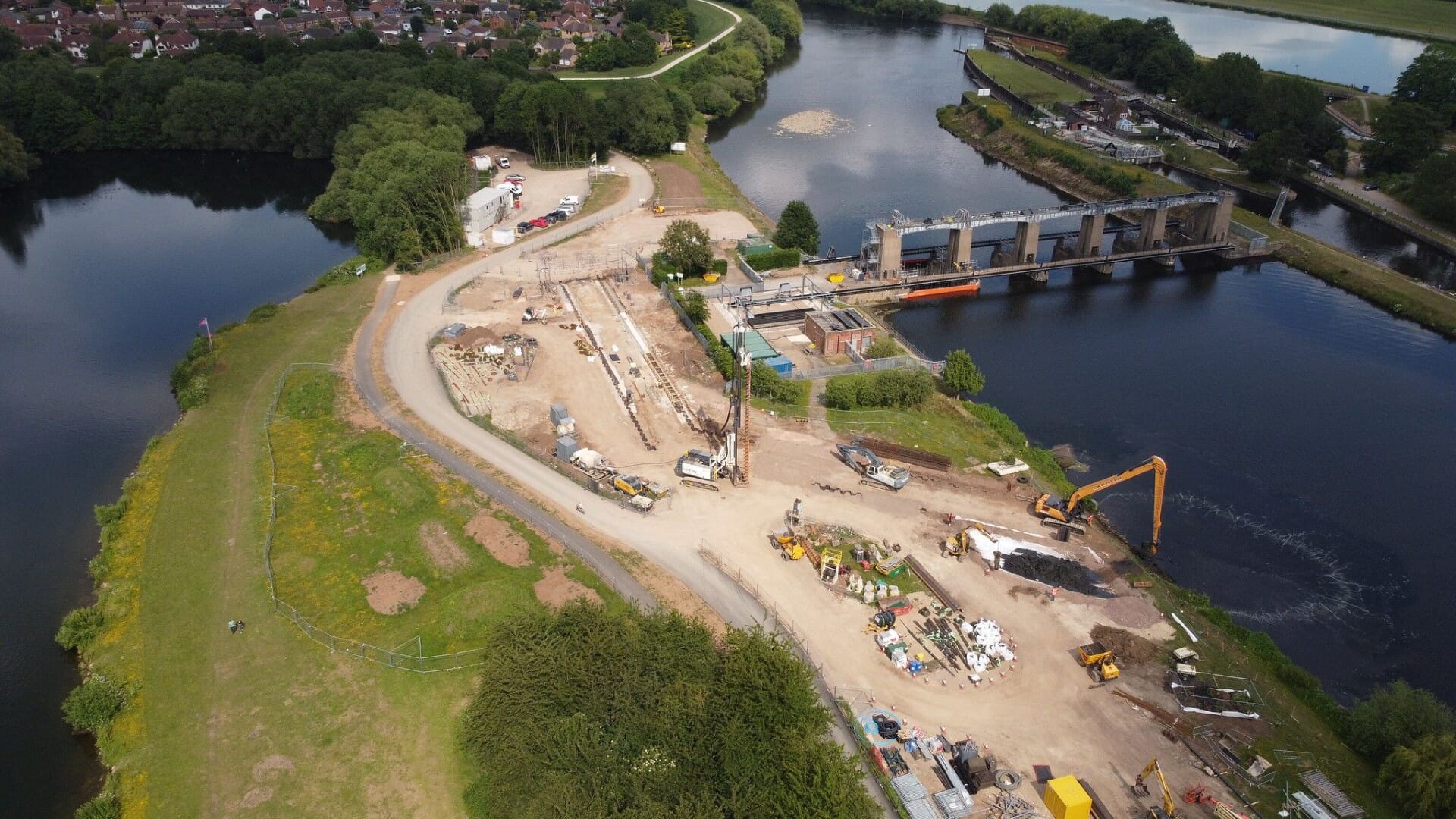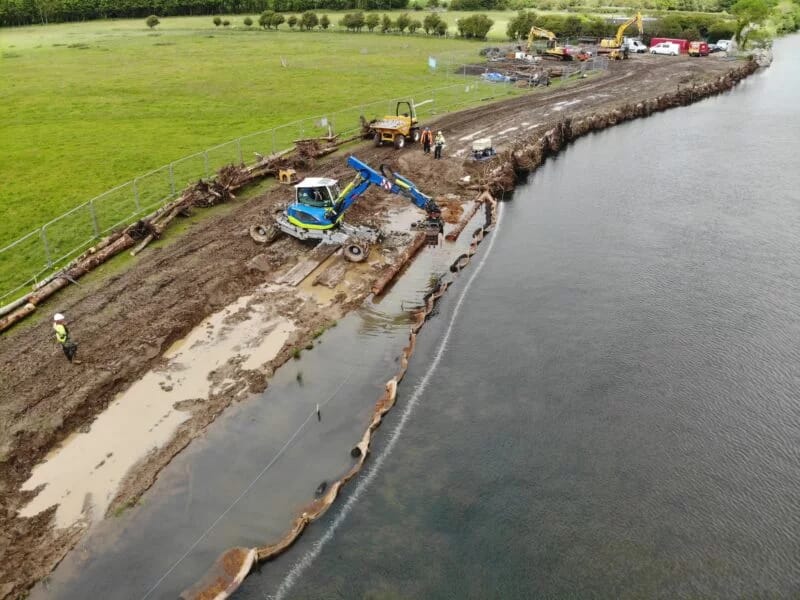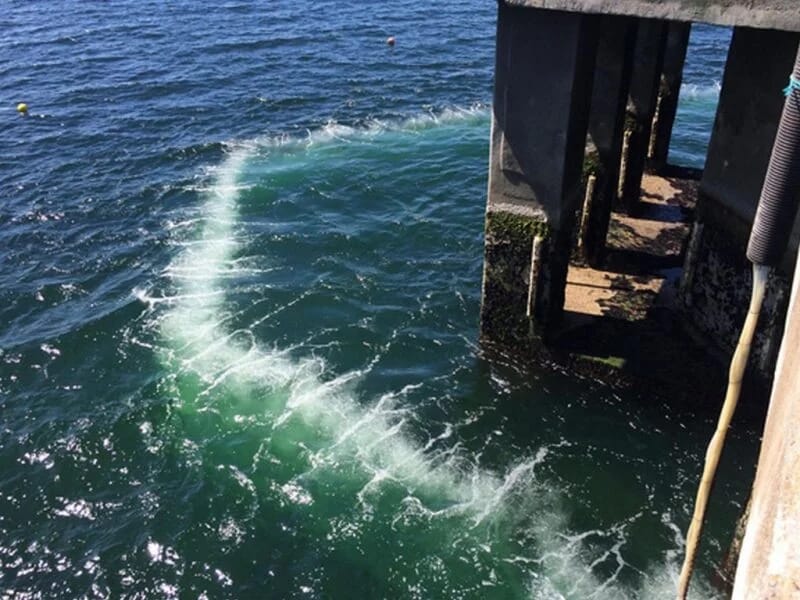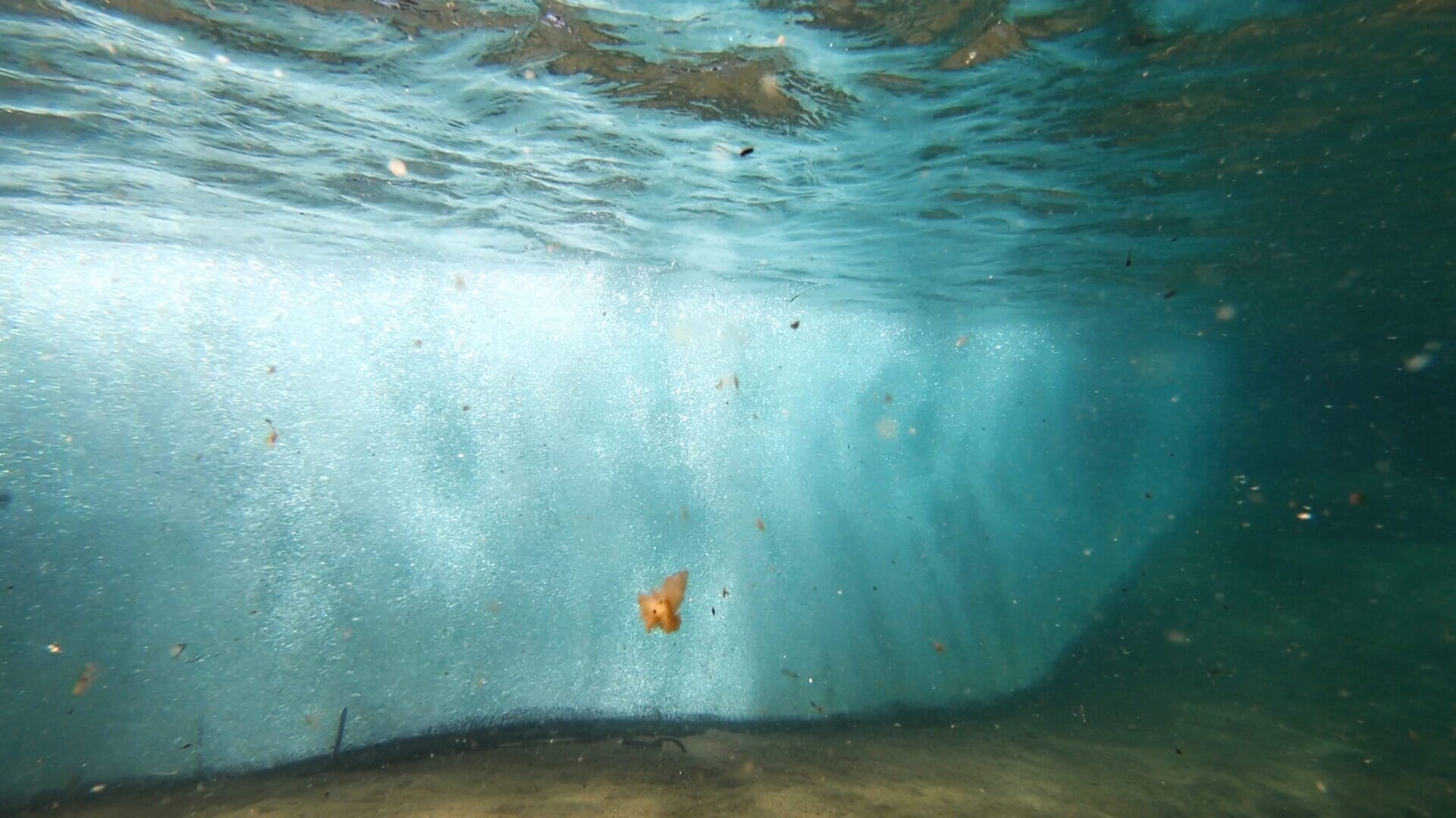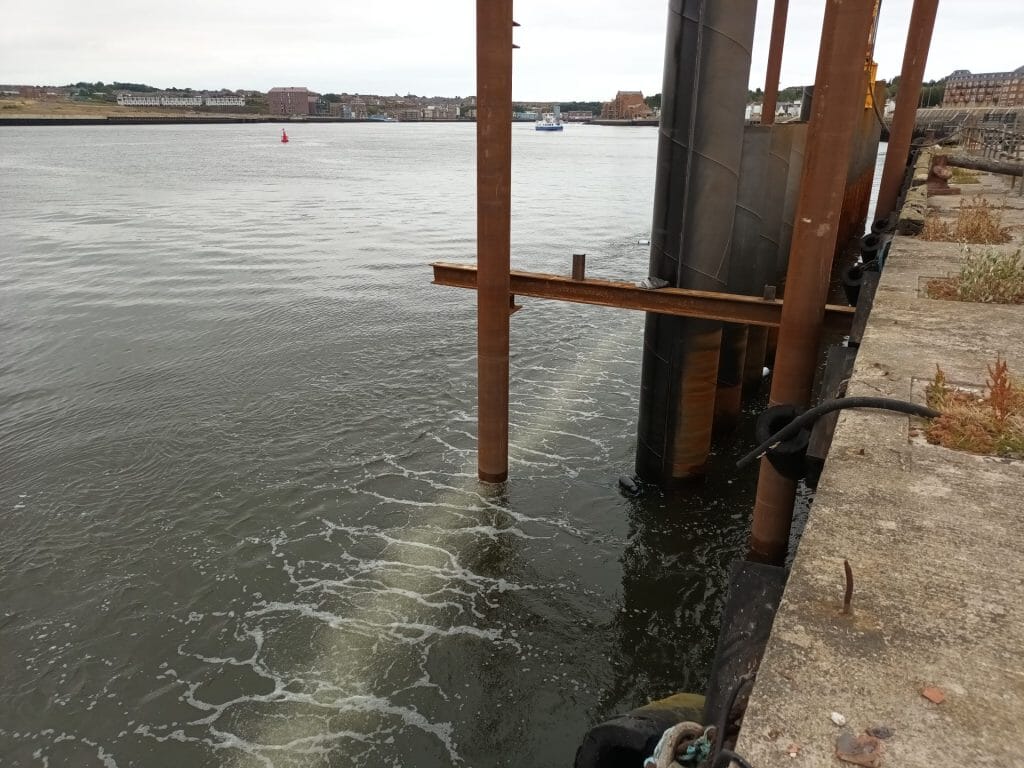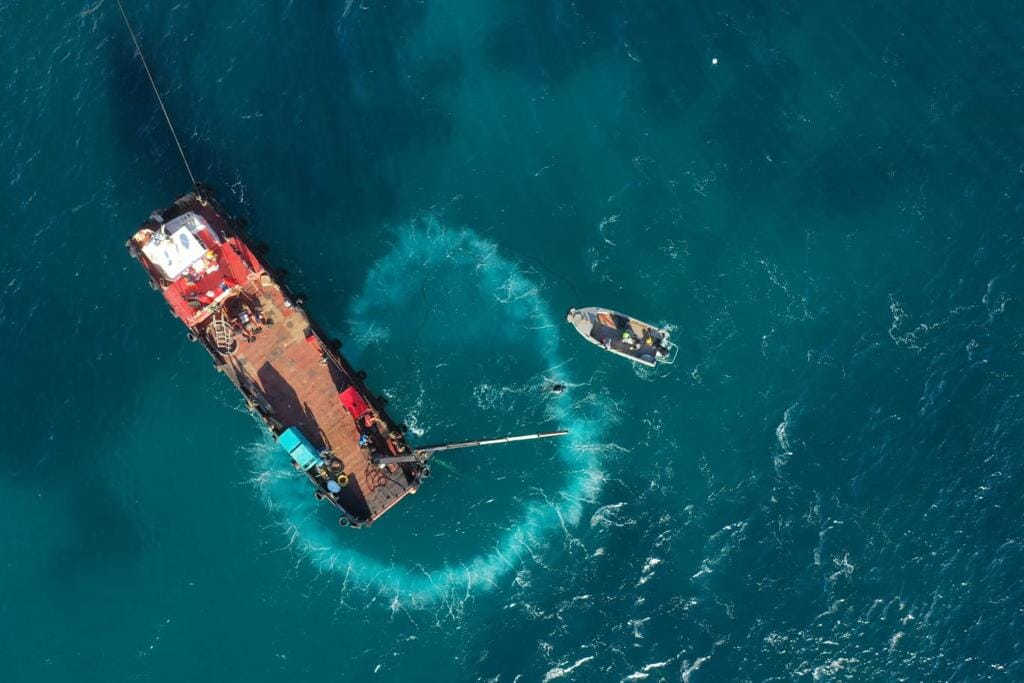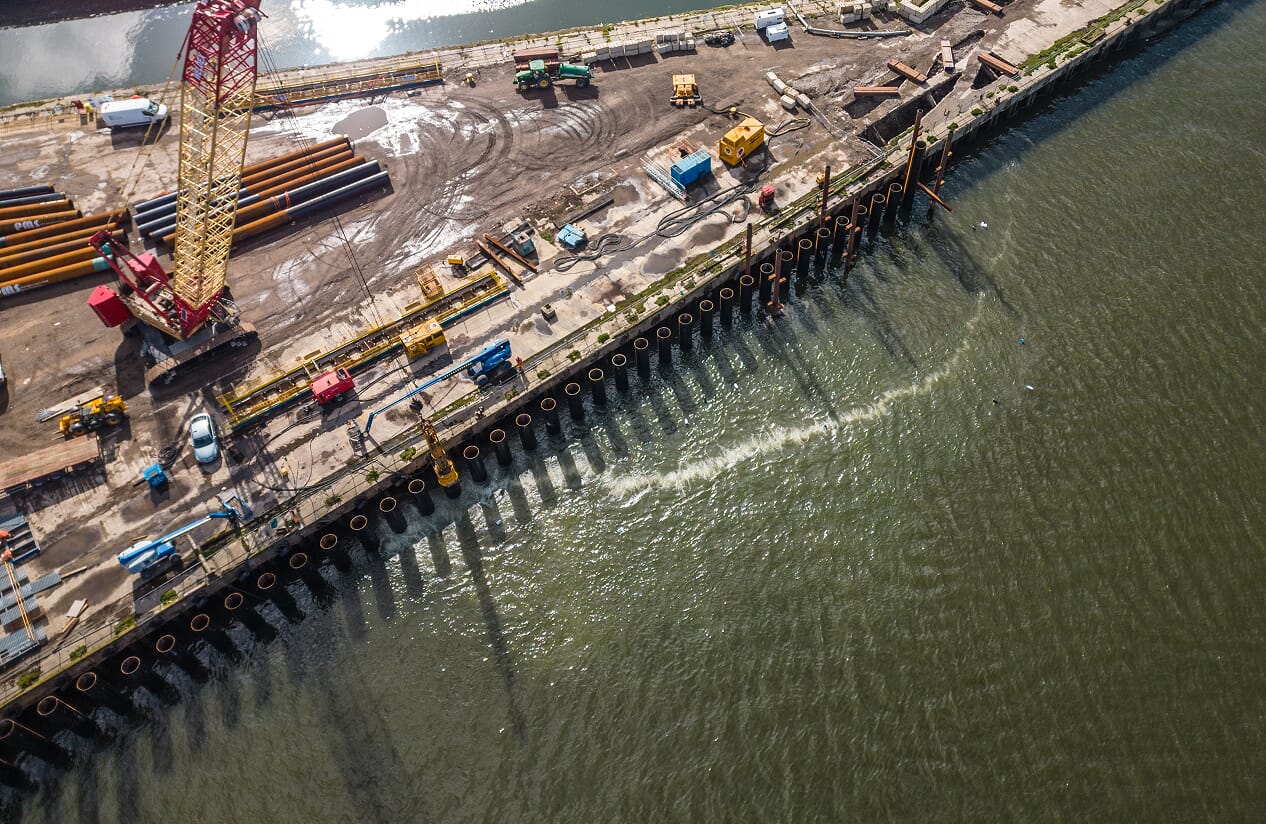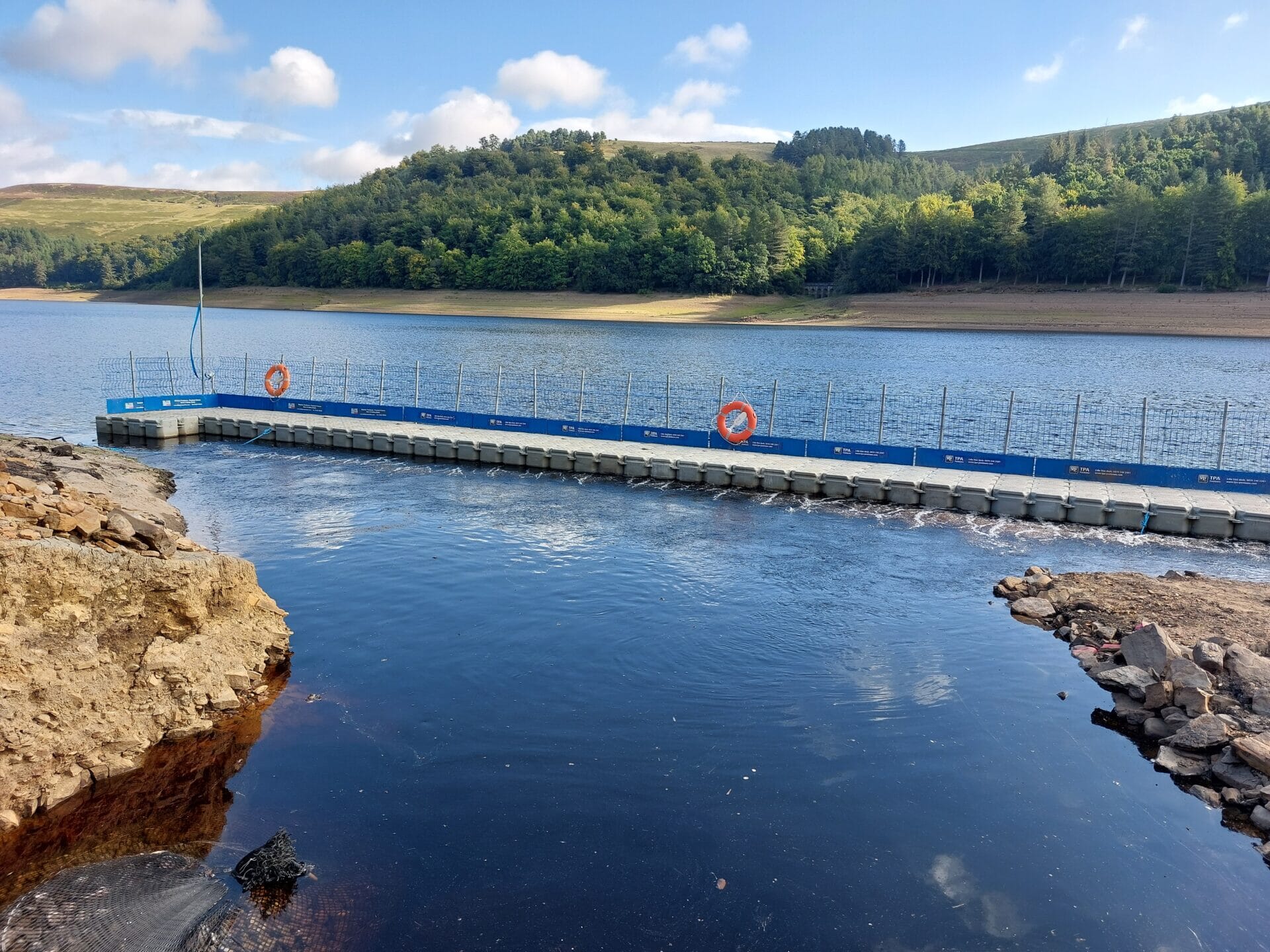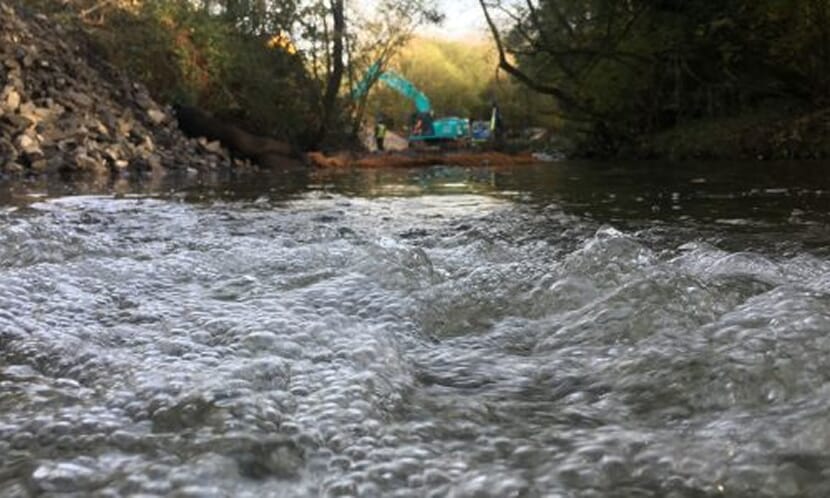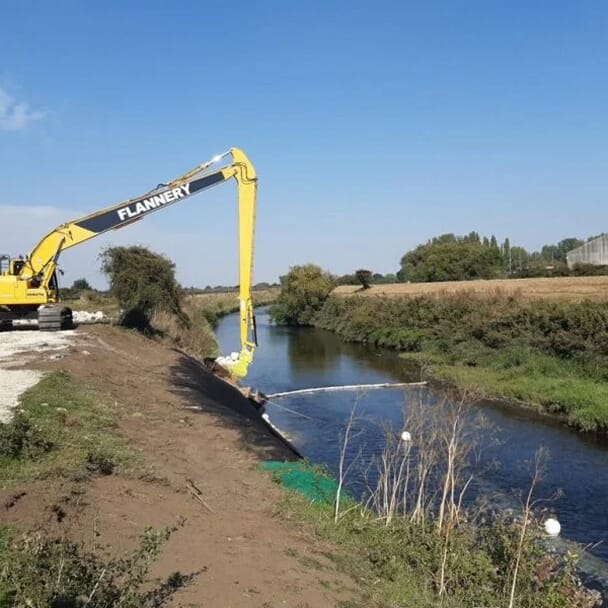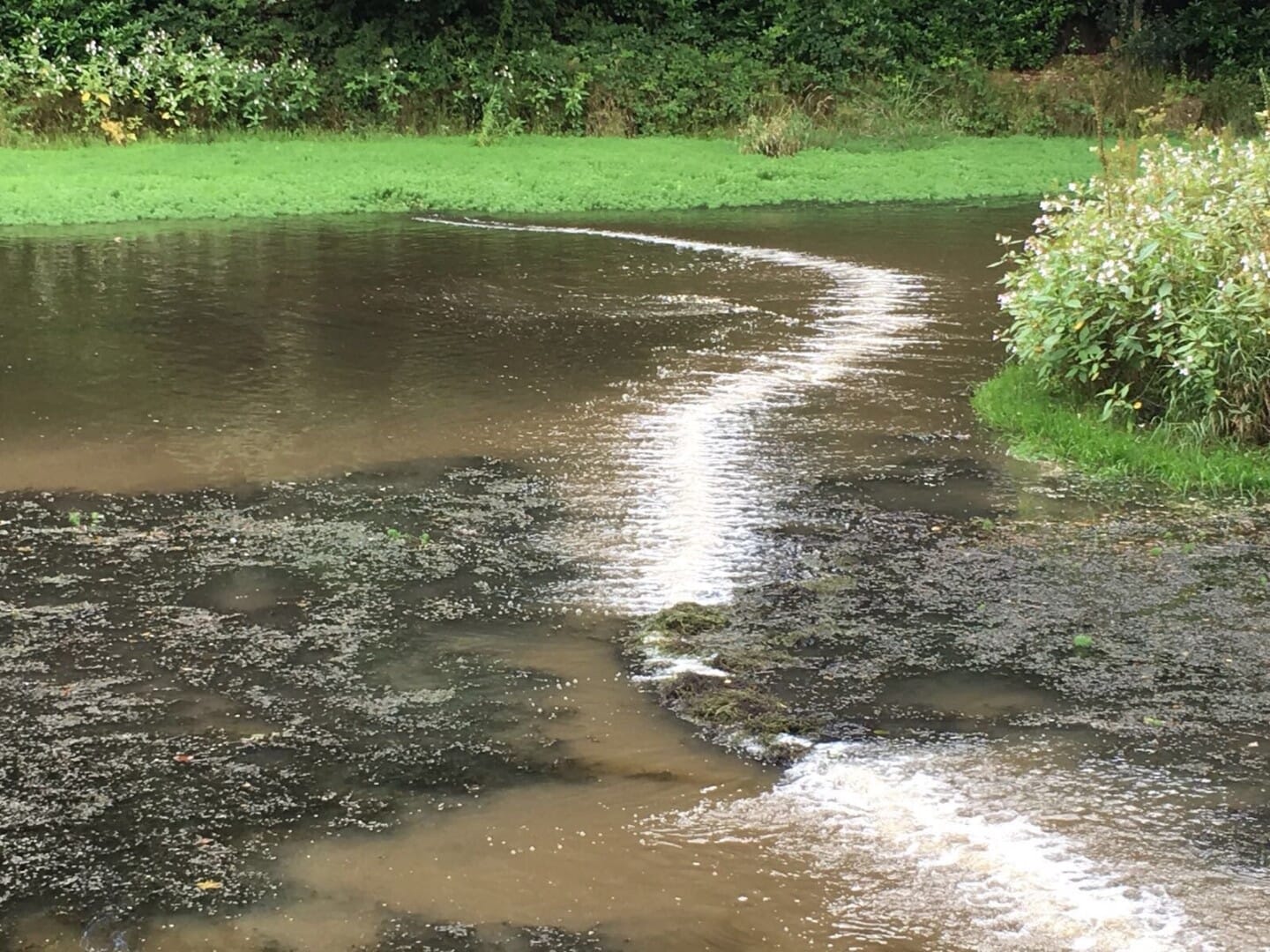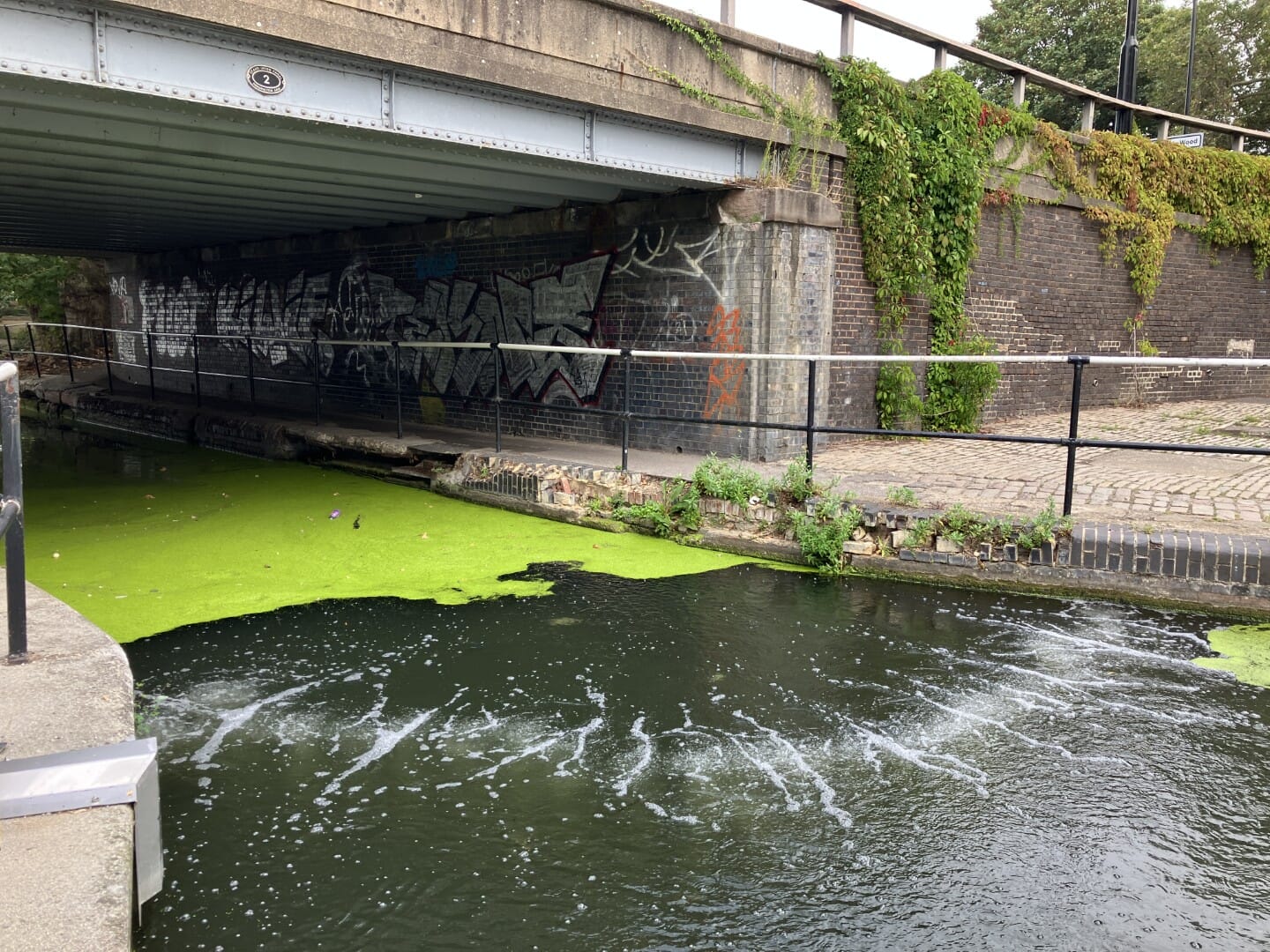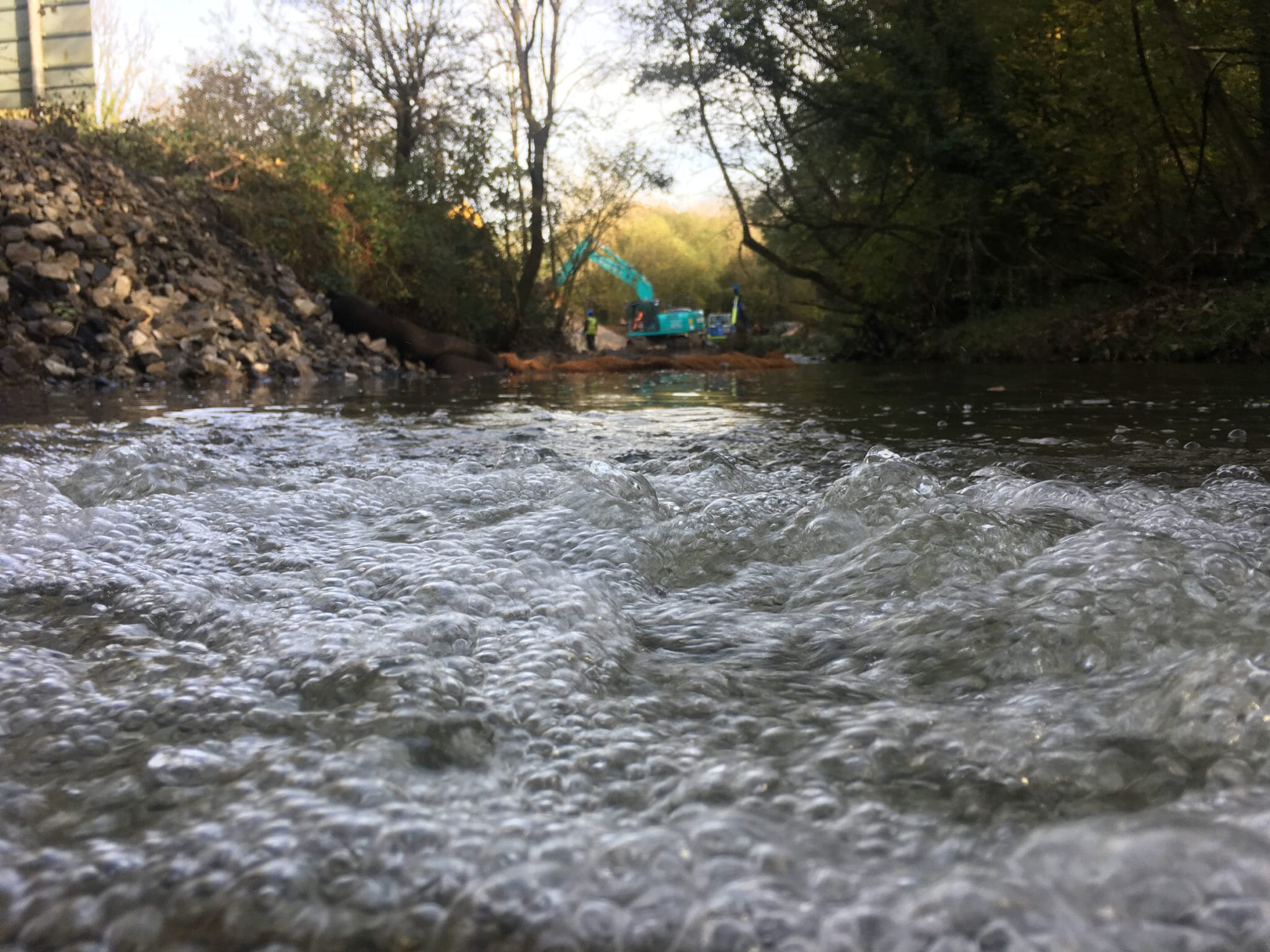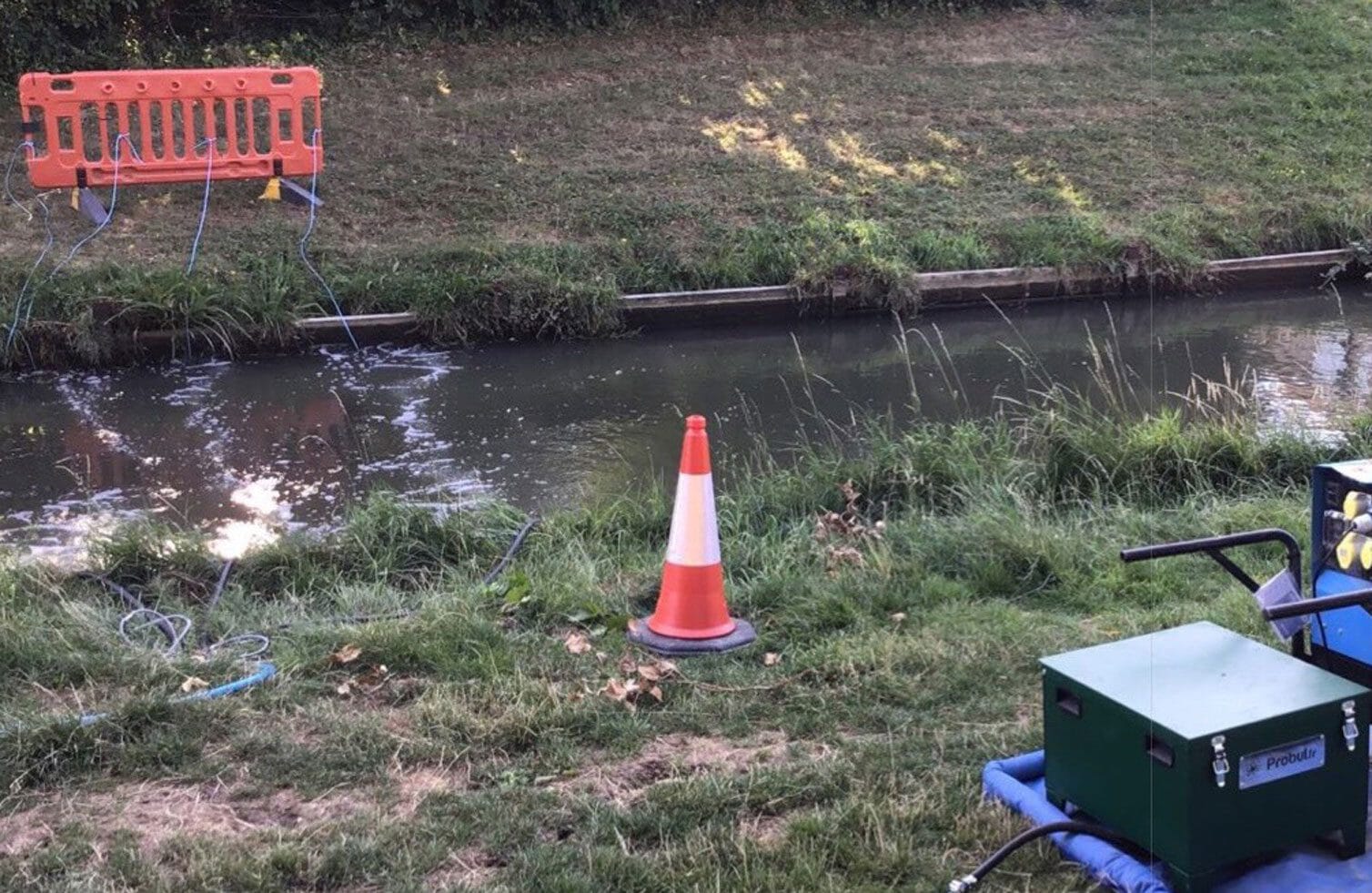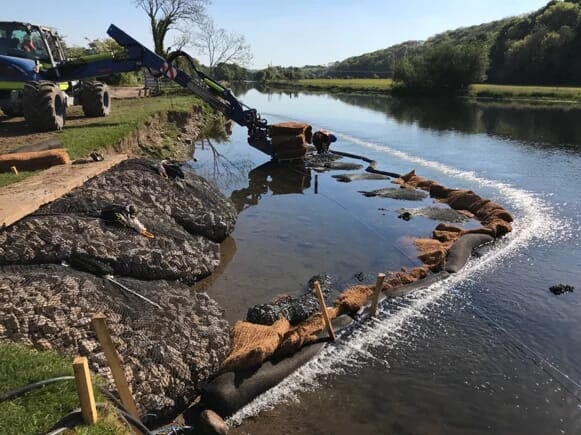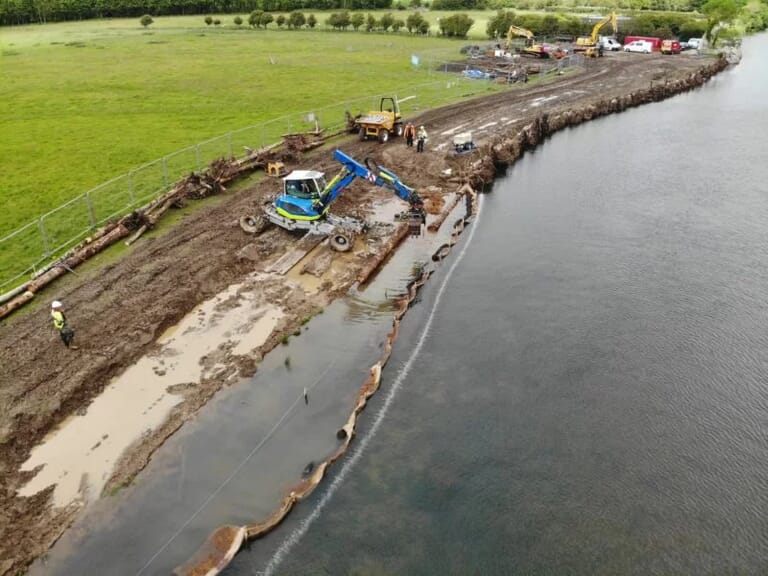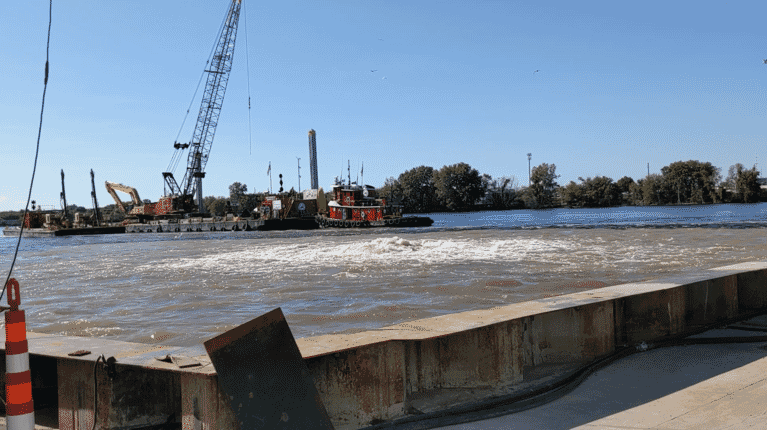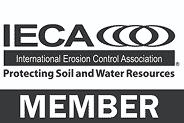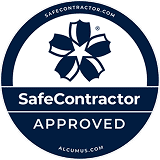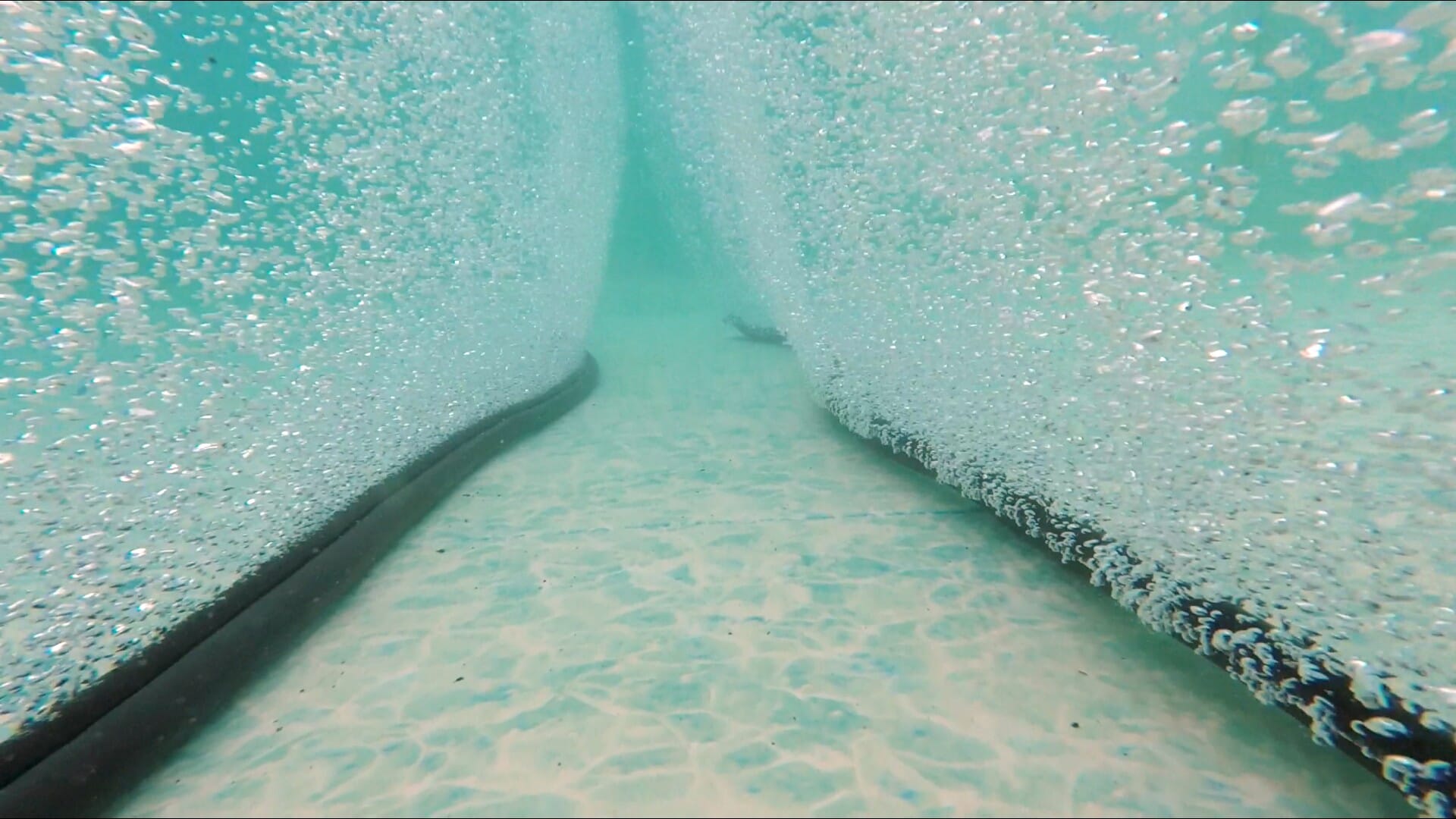
Bubble Curtains: A powerful solution, but don’t DIY
Bubble Curtains are ground-breaking technology for preventing and managing a wide range of pollution.
When correctly engineered and adapted to local project conditions, Bubble Tubing® bubble curtains provide an effective solution for trapping sediment, aerating water, and preventing pollution from travelling downstream.
It can also be used to prevent sound pollution from under water works which can harm fish and other aquatic life.
Developed over the past decade, it is the most effective and energy-efficient solution which does not hinder ship, boat, canoe or fish passage. Here’s how it works:
-
Bubble Curtain engineering:
By pumping air through a finely perforated tube on the waterway’s bottom, a bubble curtain is formed. These bubbles create an upward current. This holds back rubbish, silt and aerates the water body whilst muffling loud sounds.
-
Strategic placement:
The bubble curtain is placed across the river. Natural water flow retains pollutants, making them easier to manage, whilst not interrupting river traffic or fish.
-
The power of micro bubbles:
Frog Environmental brought in Swansea University to independently assess the effectiveness of our bubble curtains in preventing sediment from being dispersed downstream. The specially engineered pipes emit microbubbles, set to a specific size which is particularly effective at preventing the transportation of sediment in watercourses.
Why DIY bubble curtains are risky
Let us address the idea of making your own bubble curtains from plastic tubing. While it might seem like a cost-effective solution, there are several reasons why it’s not advisable:
Ineffectiveness: DIY bubble curtains lack the precision and engineering of professional systems. 20 years of R&D has been invested in this product and the exact placement and size of the holes that create the bubbles are of great importance to the effectiveness of a bubble curtain.
Without this accuracy, they may not create the necessary upward current required to meet your needs. Worse still water may get into the larger drilled holes, meaning far more energy is required to try and push air out, costing you more.
Biofouling: Our tubing is self-cleaning and requires minimal maintenance. DIY systems are not, and will result is water ingress into the pipes which then encourage algae and other things to grow, which will then cause your DIY system to fail.
Efficiency: Our bubble curtains guarantee a very efficient oxygen transfer – research has shown its one of the best aerators globally – the larger drilled holes in DIY versions do not create the right consistency of microscopic holes to achieve guaranteed results.
Durability: Commercial bubble curtains, like Bubble Tubing®, are designed for longevity. DIY plastic tubing may degrade quickly, rendering your curtain ineffective and risking micro plastics being dispersed into the watercourse.
Safety: Bubble Tubing® is safe for fish and boat passage, while DIY curtains may harm aquatic life due to improper design.
What sets Bubble Tubing® apart?
For around a decade we have been the exclusive commercial UK supplier of Bubble Tubing®, collaborating closely with its creators, CanadianPond.ca Products Ltd.
Our bubble curtains, designed around Bubble Tubing® technology, offer several distinct advantages:
Technical expertise: Bubble Tubing® benefits from expert technical guidance and a process-driven design approach for silt pollution and sound control applications.
Safety and simplicity: It’s safe, controllable, and easy to deploy. Plus, it comes with a 5-year parts warranty.
Chemical resistance: Bubble Tubing® meets chemical and heat resistance standards for water and wastewater applications. It can be used in both fresh water and saline conditions.
Micro-bubble consistency: Designed to produce consistent micro-bubbles, it enhances efficacy across various scenarios.
Performance data: Backed by performance data from controlled and field-scale applications, Bubble Tubing® delivers results.
Some of our bubble curtain solutions
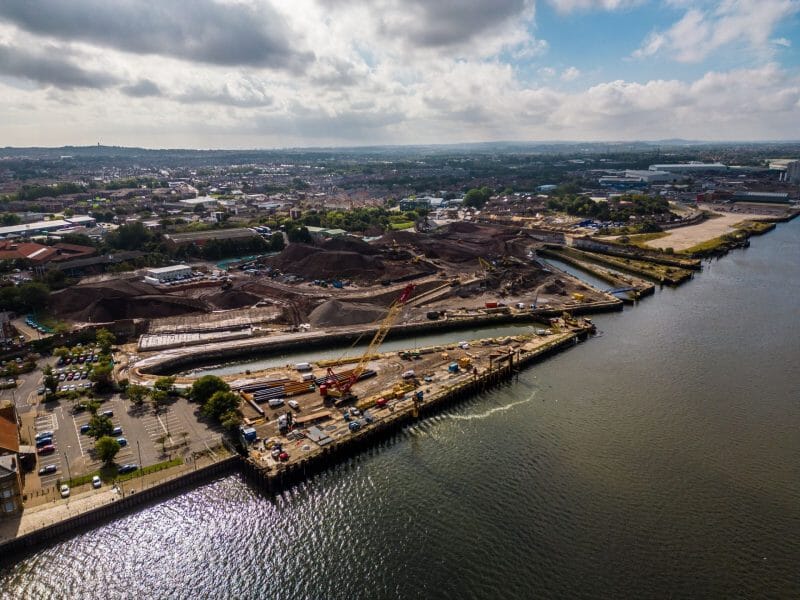
Sound Attenuation Bubble Curtains
View Product
Aeration Bubble Curtains
View Product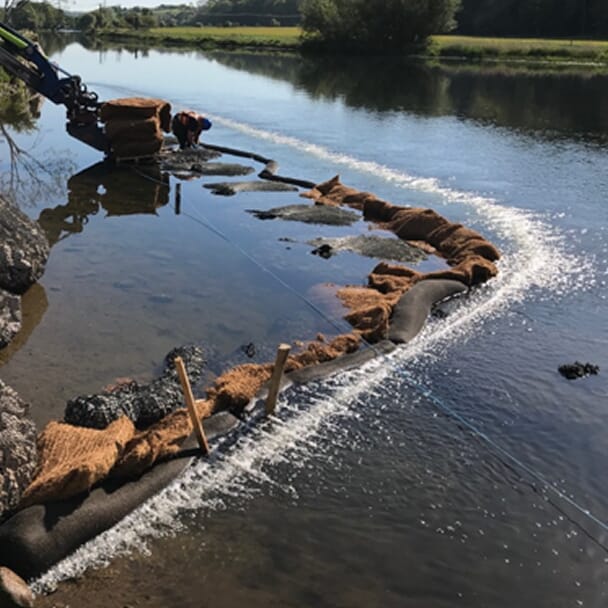
Silt & Debris Bubble Barriers
View Product
Water Injection Dredging Bubble Curtains
View Product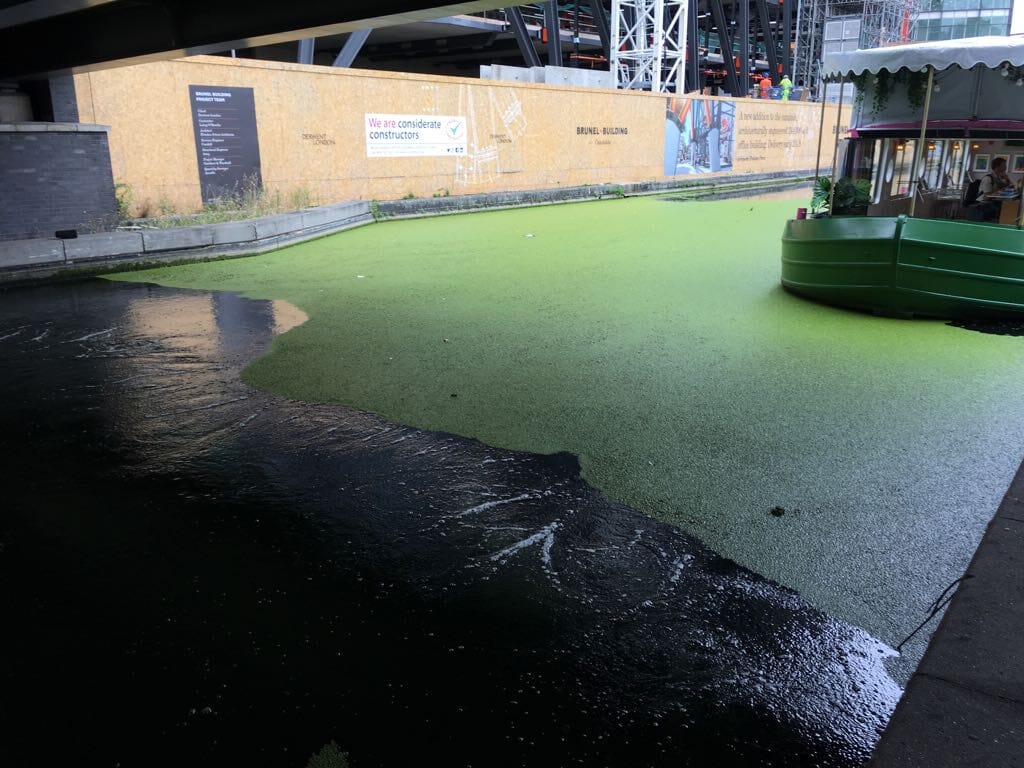
Litter & Weed Control Bubble Curtains
View Product
OctoAir® Aeration Systems
View Product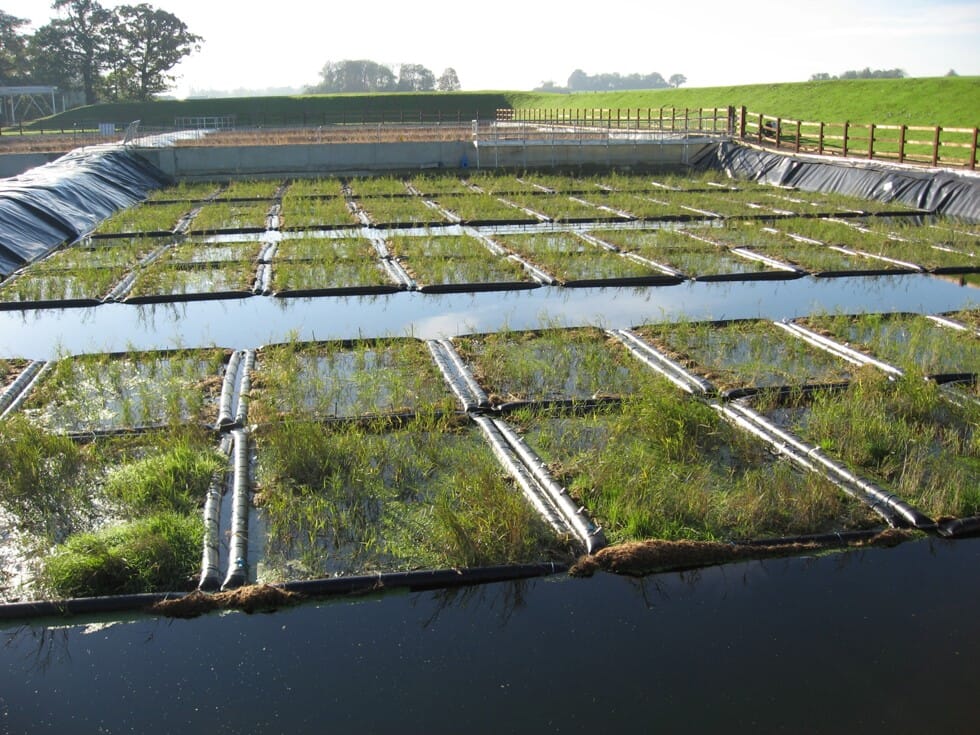
Aerated Reedbeds
View ProductWhat research has gone into Bubble Tubing®?
Highly efficient aeration
During the summer of 2011, the manufacturer of Bubble Tubing® and OctoAir, CanadianPond.ca Products Ltd retained GSEE, Inc., to perform unsteady state clean water shop oxygen transfer tests on ½” & ¾” Bubble Tubing® and the OctoAir-10® aeration systems.
Overall, the results obtained for the CanadianPond.ca Products Ltd. aeration systems were uniformly excellent and produced some of the highest SOTE values GSEE, Inc. has observed.
You can read the research paper here showing the results of Bubble Tubing aeration systems being uniformly excellent and producing some of the highest SOTE values observed.
Silt and sediment pollution mitigation
Swansea University (SEACAMS) studied the effectiveness of bubble curtains in restricting sediment movement in seawater under laboratory conditions on behalf of Frog Environmental. A seawater tank was set up with single, double and triple lines of Bubble Tubing® with sediments of various sizes inserted into the laminar water flow.
Settled sediments were collected on either side of the tubing. A single bubble curtain restricted 50% of silt on average. Overall the study showed that 3 lines of Bubble Tubing® can impede up to 90% of silt dispersal.
Read the research undertaken by Swansea University here.
Underwater sound reduction when piling, dredging, drilling or blasting
A field studies have been undertaken to measure the capacity of a bubble curtain using Bubble Tubing® technology to attenuate underwater sound caused by pile driving, dredging, drilling or blasting.
It has shown that Bubble curtains are effective to reduce dB on all spectrum of frequencies (high to low). The results demonstrated that Bubble Tubing® technology effectively achieves high levels of underwater sound attenuation. On average, the attenuation ranges from 20 dB to 80 dB. Contact us for a copy of this report.
We have also partnered with clients who were early adopters of this innovative technology. Take a look at this project where the bubble curtain achieved a 99% reduction in sound which protected salmon migration seasons during piling operations at a 9 hectare dockyard redevelopment.
Deflecting jellyfish, litter and debris
Testing was carried out with C-Core on behalf of Canadian Pond in measuring the efficiency of Bubble Tubing® in jellyfish mitigation based on tidal currents, jellyfish size, bubble curtain angle, number of curtains and their spacing.
The study demonstrated that bubble curtains are effective at deflecting neutrally buoyant elements such as jellyfish or plastics and organic debris. The research enabled the testing of numerous parameters (angles, air flow etc) in different situations (currents, depths, etc) to identify the best configuration for each situation. This study is available on request.
De-icing performance
Testing has been undertaken to identify the de-icing performance created by Bubble Tubing® linear systems under specific conditions.
The average de-icing rates measured ranged from 3 to 18 mm/h, depending on the measurement location and ambient conditions. De-icing with Bubble Tubing® at low air flow rates is more efficient than at higher air flow rates, resulting in energy savings.
Arming you with the right systems to keep your project on track
For contractors, the challenge of working in or near water is inevitable. But with innovative technologies and solutions like our bubble curtains and barriers, the risks can be managed effectively.
We help companies deliver projects that meet regulatory standards, protect the environment, and keep within budget. Our solutions ensure you’re working with or near water in the smartest possible way. Contact us to discuss your requirements and we’ll create a solution that’s site-specific for your project.
For products, services, training and technical sales support contact us or call 0345 057 4040.
Contact UsDisclaimer: This article is correct at the time of writing and while we endeavour to update annually, legislation may change over time. We pride ourselves on providing site-specific advice. Please contact us about your situation; we’d be delighted to help.
